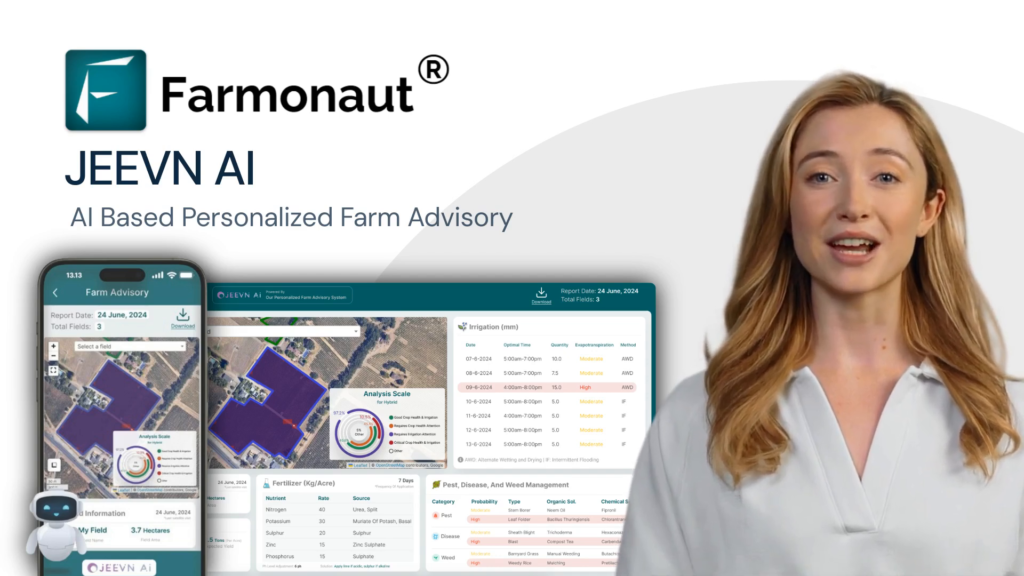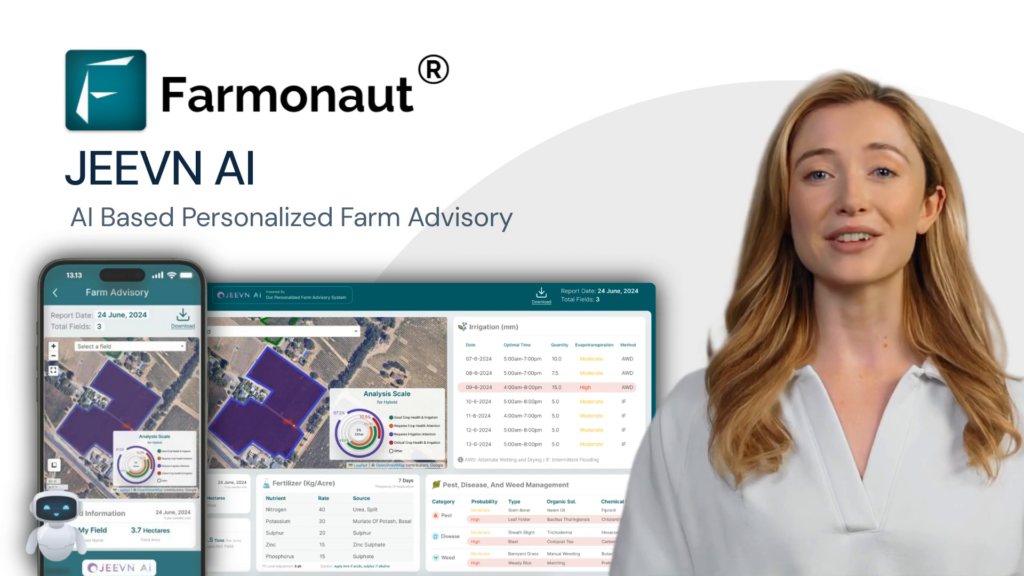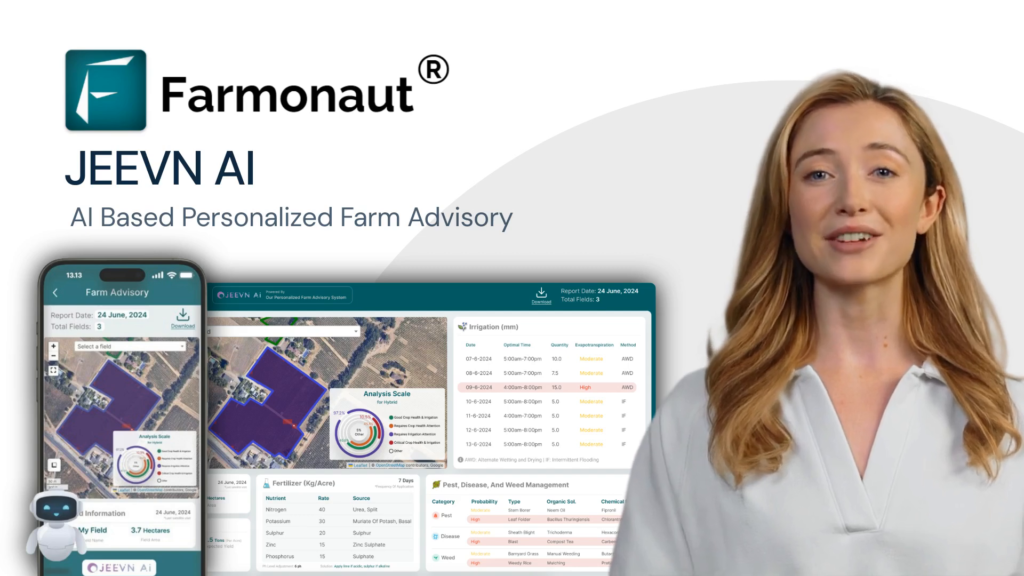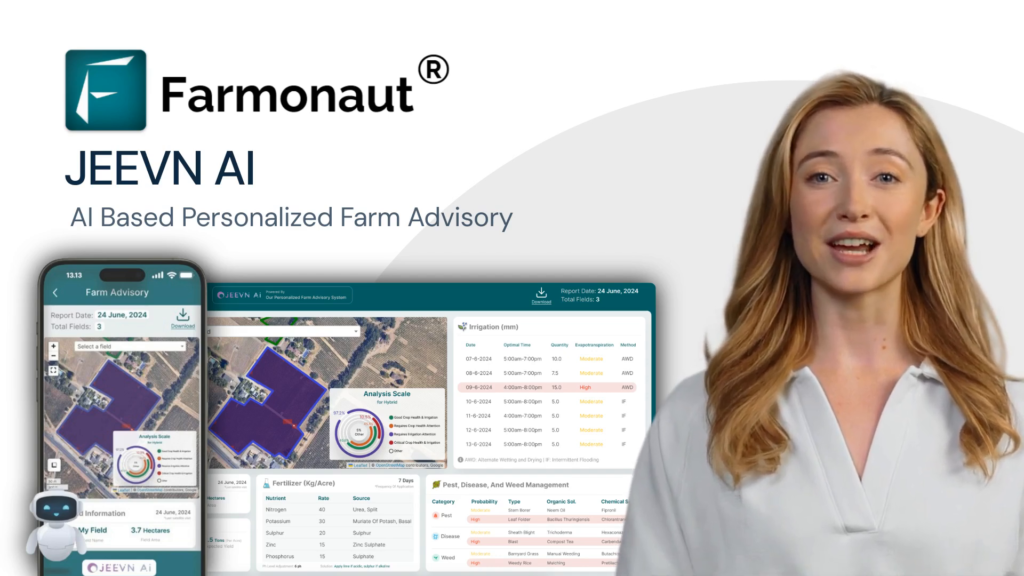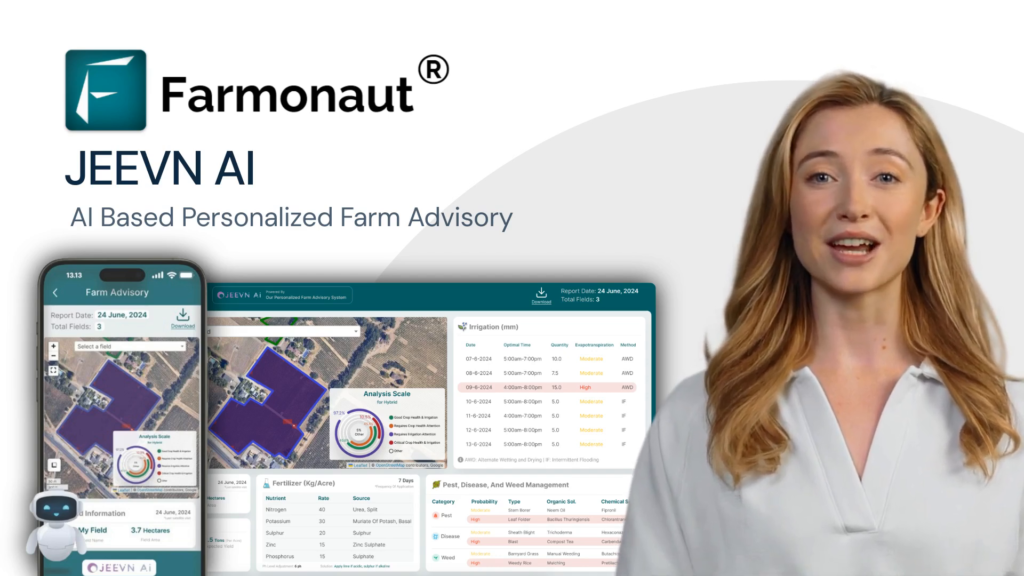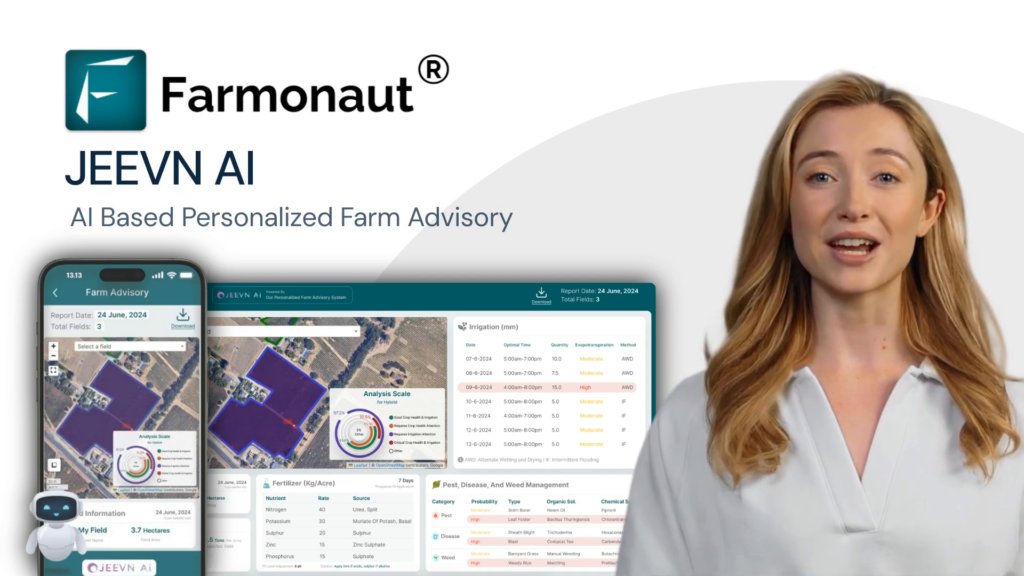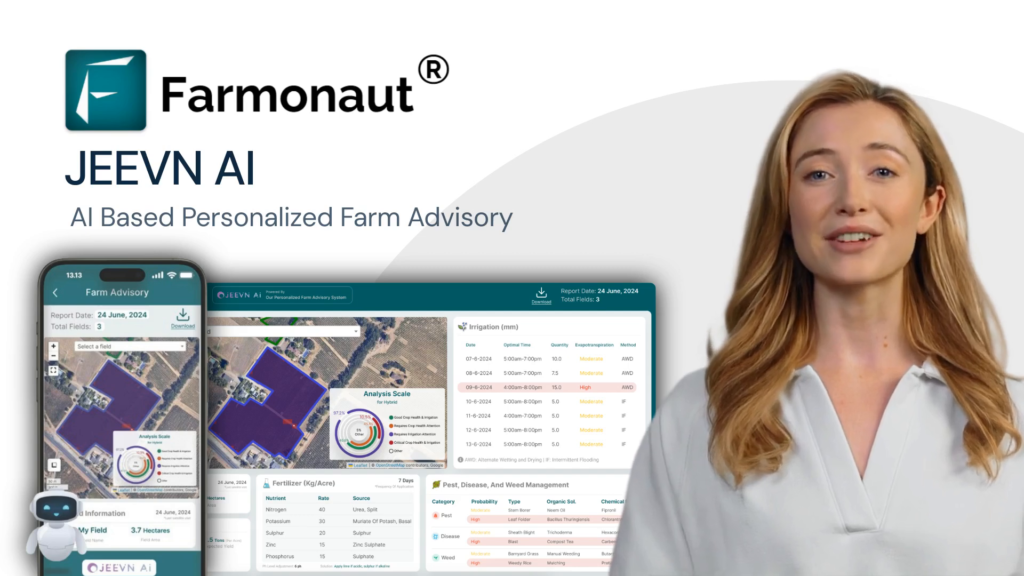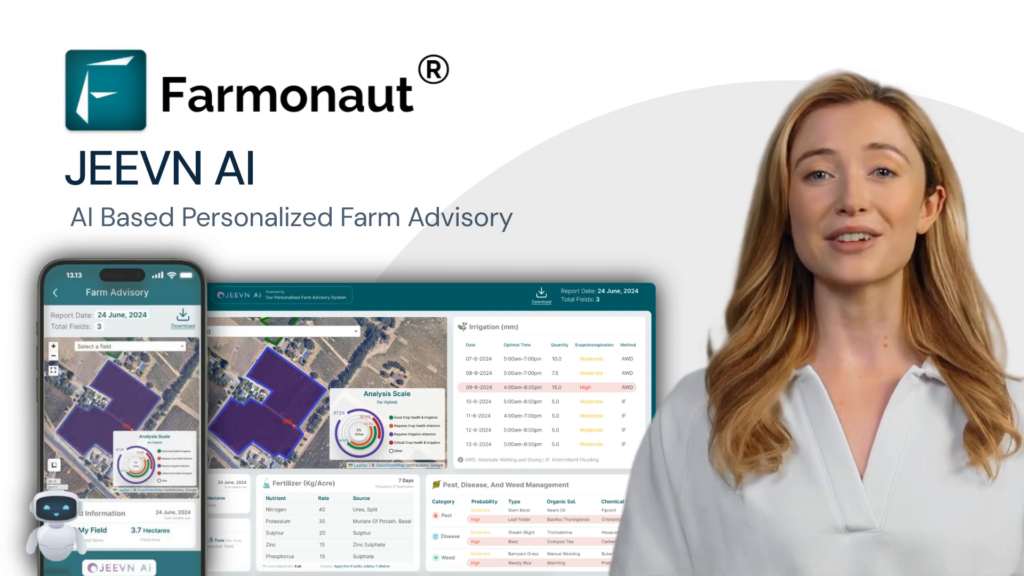Ohio’s Solar Farm Boom: Balancing Renewable Energy and Agricultural Land Use in Madison County
“Ohio’s Senate Bill 52 empowers local officials to influence solar siting decisions across 88 counties.”
In recent years, we’ve witnessed a significant transformation in Ohio’s rural landscape, particularly in Madison County, as the state experiences a surge in utility-scale solar projects. This boom has sparked intense debates among farmers, residents, and policymakers, highlighting the complex interplay between renewable energy development and traditional agricultural practices. As we delve into this evolving situation, we’ll explore the multifaceted impacts of solar farms on Ohio’s communities, economy, and environment.
The Rise of Solar Farms in Ohio
Ohio, the seventh most populous state in the U.S., has been gradually embracing solar energy as a viable alternative to conventional power sources. While the Buckeye State currently lags behind solar powerhouses like California, which boasts over 1,200 large-scale solar utility arrays, Ohio is making significant strides in expanding its solar capacity. Currently, there are a dozen operational large-scale solar utility arrays across the state, with more projects in various stages of development and approval.
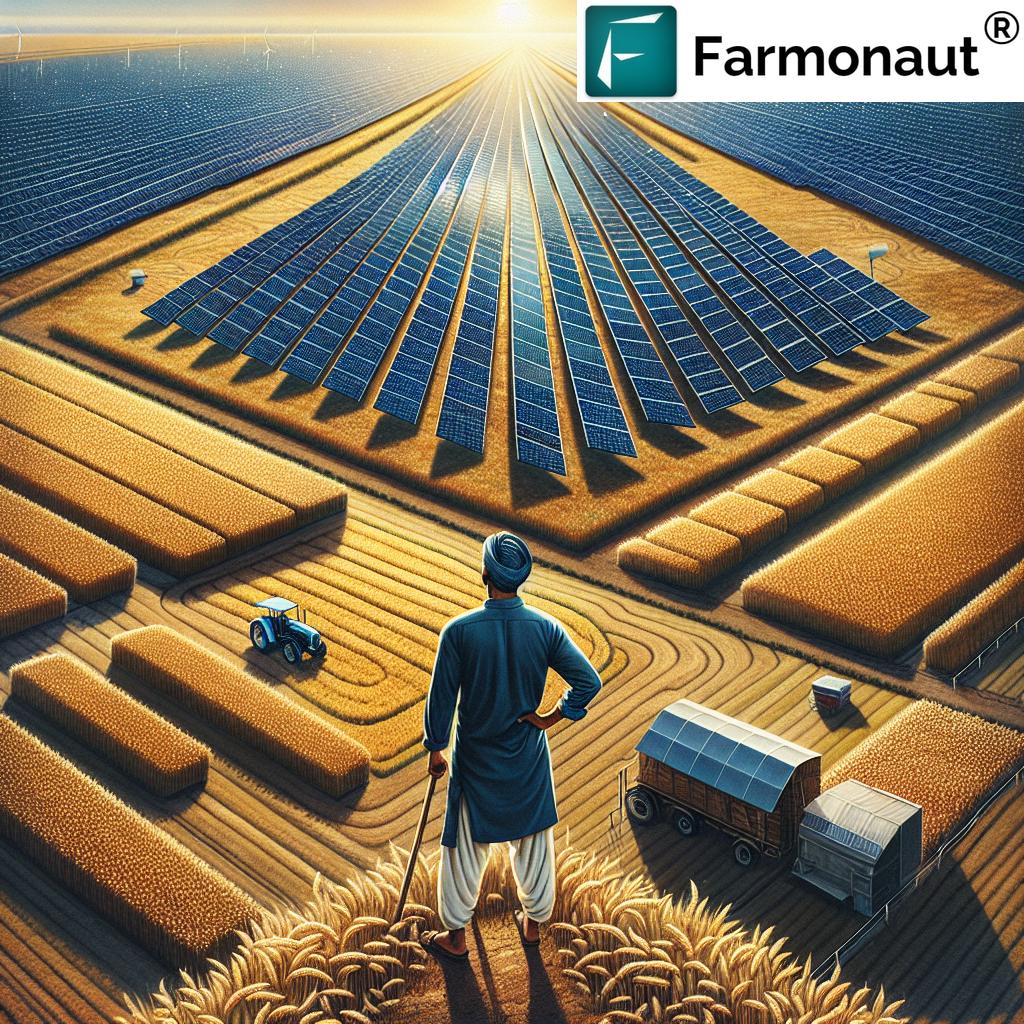
Madison County, in particular, has emerged as a focal point for solar development in Ohio. With three operating solar farms collectively generating about a gigawatt of electricity – enough to power all households in Columbus – the county is at the forefront of this renewable energy revolution. If two additional certified projects come online, approximately 10% of Madison County’s land could be covered by solar panels, marking a significant shift in land use patterns.
The Clash Between Solar Energy and Farmland
The rapid expansion of solar farms in Ohio has not been without controversy. The transformation of agricultural land into solar fields has sparked heated debates among community members, farmers, and local officials. This clash between solar energy development and traditional farming practices has divided opinions and, in some cases, even families.
On one side of the debate, proponents of solar farms argue that they offer a reliable source of income for farmers, helping to diversify their revenue streams and provide financial stability in the face of unpredictable agricultural markets. Aaron Boerger, a Madison County farmer who leased a portion of his 5,000-acre farm to Savion, a solar company, exemplifies this perspective. Despite his initial reservations, Boerger now receives over $800,000 annually from the solar project, a sum that will increase each year for the next 29 years.
On the other hand, opponents of solar farms on agricultural land argue that these projects threaten the preservation of prime farmland and could have long-term implications for food security and rural communities. Critics like Nancy Baker from Knox County express concerns about the industrialization of rural areas, stating, “Let’s cancel it all and go back to living life in the country, where it’s quiet and you know your neighbors.”
The Role of Local Government and Senate Bill 52
The debate surrounding solar farms in Ohio has prompted significant legislative action, most notably in the form of Senate Bill 52. This game-changing law, which took effect in October 2021, grants local officials unprecedented power in the solar siting process. Under SB 52, county commissioners can prohibit proposed solar or wind projects before they reach the Ohio Power Siting Board for consideration. Additionally, the law allows for the designation of “restricted areas” or “exclusionary zones” where solar and wind facilities cannot be located.
This legislation has had a profound impact on the landscape of solar development in Ohio. Some counties, like Delaware County, have considered creating exclusion zones for all unincorporated areas, effectively blocking large-scale solar projects. However, the implementation of such measures has raised questions about potential conflicts with landowner rights and the balance between local control and broader energy policy goals.
Economic Impact and Community Benefits
The economic implications of solar farms in Ohio are substantial and multifaceted. For counties like Madison, the influx of solar projects has resulted in significant revenue streams. The county is expected to collect approximately $10 million annually when all planned utility-scale solar farms become operational, with $5 million already received. These funds are earmarked for essential services such as schools, roads, law enforcement, and other community needs.
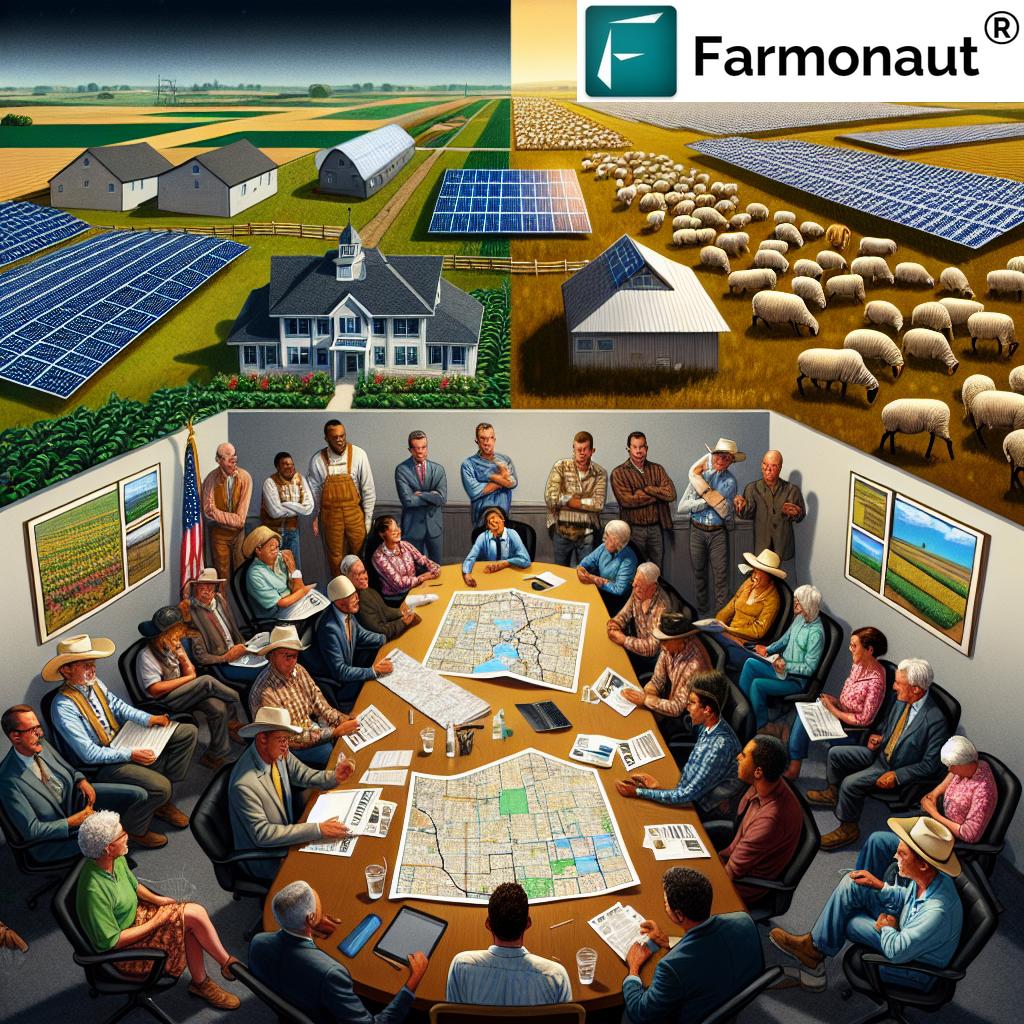
Moreover, solar projects can provide a stable income source for farmers, helping to offset the risks associated with traditional agriculture. As Aaron Boerger noted, the revenue from solar leases can make “an off year of drought or flooding seem not quite as bad.” This financial stability can be particularly attractive to farmers facing increasingly unpredictable weather patterns and market fluctuations.
“Madison County, Ohio, faces a potential transformation with utility-scale solar projects covering thousands of acres of farmland.”
Environmental Considerations and Land Use Efficiency
The environmental impact of solar farms is a crucial aspect of the ongoing debate. While solar energy is generally considered a clean, renewable source of power, the large-scale conversion of agricultural land to solar fields raises questions about land use efficiency and long-term environmental consequences.
Proponents argue that solar farms can serve as a form of land conservation, preventing urban sprawl and preserving open spaces. As Boerger puts it, “Every time we build solar, they’re not building homes there, there’s not another Costco. We’re still stopping urban sprawl.” Additionally, some solar developers are exploring agrivoltaics – the practice of growing crops between and under solar panels – as a way to maintain agricultural productivity while generating renewable energy.
Critics, however, express concerns about the loss of prime farmland and potential impacts on soil health and local ecosystems. The long-term effects of large-scale solar installations on agricultural land remain a topic of ongoing research and debate.
The Future of Solar Farms in Ohio
As Ohio continues to navigate the complex landscape of solar energy development, several factors will shape the future of solar farms in the state:
- Policy Evolution: The implementation of Senate Bill 52 and potential future legislation will continue to influence the pace and scale of solar development.
- Technological Advancements: Improvements in solar panel efficiency and energy storage capabilities could alter the land requirements for solar farms.
- Economic Factors: Fluctuations in energy prices, agricultural markets, and government incentives will impact the financial viability of solar projects.
- Community Engagement: The success of future solar projects may depend on developers’ ability to address community concerns and build local support.
As we look to the future, it’s clear that the integration of solar energy into Ohio’s rural landscape will require careful balancing of diverse interests and thorough consideration of long-term impacts.
The Role of Agricultural Technology in Land Use Optimization
As the debate over solar farms and agricultural land use continues, innovative agricultural technologies are emerging as potential solutions for optimizing land use and improving farm productivity. Companies like Farmonaut are at the forefront of this agricultural revolution, offering advanced satellite-based farm management solutions that can help farmers make more informed decisions about their land use.
Farmonaut’s platform leverages satellite imagery, artificial intelligence, and machine learning to provide real-time insights into crop health, soil moisture levels, and other critical metrics. This technology can help farmers optimize their existing agricultural land, potentially reducing the pressure to convert farmland to other uses like solar farms.
Key features of Farmonaut’s technology include:
- Satellite-Based Crop Health Monitoring: Provides farmers with up-to-date information on vegetation health and soil conditions.
- AI Advisory System: Offers personalized recommendations for crop management, improving farm productivity and efficiency.
- Resource Management Tools: Helps farmers optimize their use of water, fertilizers, and other inputs.
By embracing such technologies, farmers can potentially increase their yields and profitability on existing agricultural land, providing an alternative path to financial stability without resorting to solar leases.
Comparative Analysis: Solar Farms vs. Traditional Agriculture
To better understand the trade-offs involved in the solar farm debate, let’s examine a side-by-side comparison of solar farms and traditional agriculture in Madison County, Ohio:
| Factors | Solar Farm Impact | Traditional Agriculture Impact |
|---|---|---|
| Annual Revenue per Acre | $800 – $1,500 (lease payments) | Variable (crop dependent) |
| Job Creation | Limited long-term jobs | Steady agricultural employment |
| Environmental Impact | Reduced carbon emissions | Soil health maintenance |
| Land Use Efficiency | High energy production per acre | Food production capacity |
| Long-term Land Commitment | Typically 25-30 year leases | Flexible crop rotation |
| Community Impact | Increased tax revenue | Preservation of rural character |
This comparison highlights the complex nature of the solar farm debate, with each option offering distinct advantages and challenges.
The Path Forward: Balancing Energy Needs and Agricultural Preservation
As Ohio continues to grapple with the solar farm boom, finding a balance between renewable energy development and agricultural preservation will be crucial. Some potential strategies for addressing this challenge include:
- Smart Siting: Prioritizing solar development on marginal or less productive agricultural lands.
- Agrivoltaics: Encouraging dual-use solar projects that allow for continued agricultural production.
- Community Solar: Promoting smaller-scale solar projects that can provide local energy benefits without large land requirements.
- Agricultural Technology Adoption: Supporting farmers in implementing advanced technologies to improve productivity on existing farmland.
- Comprehensive Land Use Planning: Developing county-wide strategies that balance energy, agriculture, and conservation needs.
By embracing a multifaceted approach, Ohio can work towards a future where renewable energy and agriculture coexist harmoniously, supporting both the state’s energy goals and its rich farming heritage.
Conclusion: Navigating the Solar Farm Landscape in Ohio
The solar farm boom in Ohio, particularly in Madison County, represents a significant shift in the state’s energy landscape and rural development patterns. As we’ve explored, this transition brings both opportunities and challenges, requiring careful consideration of economic, environmental, and community factors.
While solar farms offer potential financial benefits for farmers and increased tax revenue for local communities, they also raise important questions about land use, food security, and rural character. The implementation of Senate Bill 52 has added another layer of complexity to this issue, empowering local officials to play a more significant role in shaping their communities’ energy futures.
As Ohio moves forward, finding a balance between renewable energy development and agricultural preservation will be crucial. This may involve innovative approaches such as agrivoltaics, smart siting strategies, and the adoption of advanced agricultural technologies to optimize land use and farm productivity.
Ultimately, the success of Ohio’s solar farm initiatives will depend on thoughtful planning, community engagement, and a willingness to adapt to changing energy and agricultural landscapes. By fostering open dialogue and exploring creative solutions, Ohio can work towards a future where renewable energy and agriculture coexist and thrive, supporting both the state’s energy goals and its rich farming heritage.
FAQ Section
Q: How do solar farms impact agricultural land in Ohio?
A: Solar farms in Ohio can significantly change land use patterns, converting agricultural land to energy production. While this provides steady income for some farmers, it also reduces available farmland for traditional agriculture.
Q: What is Senate Bill 52, and how does it affect solar farm development in Ohio?
A: Senate Bill 52 is a law that gives local officials more control over solar and wind project siting. It allows county commissioners to prohibit proposed projects or designate restricted areas where solar farms cannot be located.
Q: How do solar farms benefit local communities in Ohio?
A: Solar farms can provide significant tax revenue for local communities, supporting schools, roads, and other public services. They also offer a stable income source for participating landowners.
Q: What are the main arguments against solar farms on agricultural land?
A: Critics argue that solar farms lead to the loss of prime farmland, potentially impacting food security and changing the rural character of communities. There are also concerns about long-term environmental impacts on soil and local ecosystems.
Q: How can Ohio balance renewable energy development with agricultural preservation?
A: Strategies include smart siting of solar projects on less productive land, exploring agrivoltaics (combining solar and agriculture), promoting community solar projects, and supporting agricultural technology adoption to improve farm productivity on existing land.
Earn With Farmonaut: Earn 20% recurring commission with Farmonaut’s affiliate program by sharing your promo code and helping farmers save 10%. Onboard 10 Elite farmers monthly to earn a minimum of $148,000 annually—start now and grow your income!





